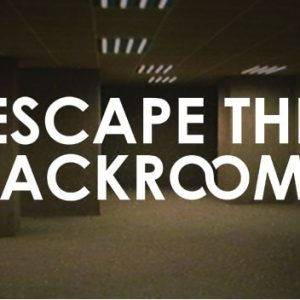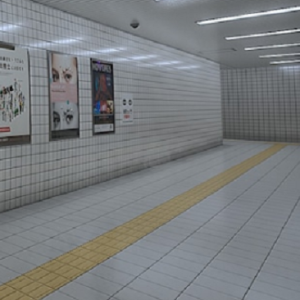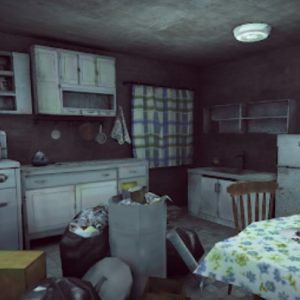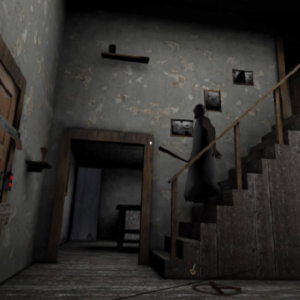Similiar games
Escape the Backrooms: An Eerie Exploration into the Unknown
Introduction to the Game with update 3 and 4
Escape the Backrooms is a thrilling and immersive video game that has captured the attention of players worldwide with its unique blend of horror, exploration, and puzzle-solving elements. Set in a mysterious and ever-changing environment known as the “Backrooms,” the game plunges players into a labyrinth of endless, monotonous rooms and hallways, each with its own set of challenges and secrets. The game’s premise revolves around the popular internet myth of the Backrooms, a place where reality seems distorted and the ordinary becomes unsettling. Players find themselves trapped in this bizarre world with one primary goal: to escape. However, the path to freedom is fraught with obstacles, as the game’s intricate design weaves in various elements of psychological horror, surreal landscapes, and an eerie atmosphere that keeps players constantly on edge. The game’s graphics are deliberately bland and repetitive, with an emphasis on a muted color palette, which adds to the overall feeling of disorientation and unease. The sound design plays a crucial role in building tension, with ambient noises and subtle sound effects that hint at the presence of unseen entities lurking in the shadows. The game’s narrative is intentionally ambiguous, leaving players to piece together the story through environmental clues and cryptic messages scattered throughout the levels. This approach allows for multiple interpretations and encourages players to explore every nook and cranny of the Backrooms in search of answers.
Gameplay Mechanics and Challenges
The gameplay of “Escape the Backrooms” is a blend of exploration, puzzle-solving, and survival elements, demanding both strategic thinking and quick reflexes from players. As players navigate through the various levels of the Backrooms, they encounter a variety of puzzles that range from simple logic problems to complex spatial challenges. These puzzles are cleverly integrated into the environment, requiring players to pay close attention to their surroundings and think creatively to progress. In addition to puzzle-solving, players must also manage resources such as light sources, which are crucial for navigating the dark corridors and revealing hidden paths or clues. The game introduces a unique mechanic of “sanity,” where players must keep their character’s mental state in check by avoiding prolonged exposure to unsettling phenomena and making decisions that prevent panic. The Backrooms are not empty; players occasionally encounter entities, each with distinct behaviors and patterns. These encounters require players to either hide, flee, or, in rare cases, confront these beings. The AI of these entities is sophisticated, making each encounter unpredictable and nerve-wracking. Stealth plays a significant role in the gameplay, as players must often avoid detection to progress. The game’s level design is non-linear, offering multiple routes and hidden areas that reward exploration and curiosity. However, this freedom also means that players can easily become lost, adding to the sense of desperation and urgency to find an escape. “Escape the Backrooms” also features a dynamic difficulty system that adapts to the player’s skill level, ensuring that the game remains challenging but fair. This system adjusts various aspects of the game, such as puzzle complexity, entity behavior, and resource availability, based on the player’s performance.
Atmosphere and Immersion
One of the most notable aspects of “Escape the Backrooms” is its ability to create a deeply immersive and unsettling atmosphere. The game’s visual style is a deliberate choice to evoke a sense of unease and familiarity, with its endless, nondescript hallways and rooms that resemble an office building stuck in a time loop. This mundane setting becomes increasingly sinister as players delve deeper into the game, with subtle changes in lighting, textures, and sounds that suggest a reality slowly unraveling. The game’s sound design is masterfully crafted, with a mix of ambient sounds, distant echoes, and occasional unsettling noises that keep players constantly on their toes. The use of silence is equally effective, creating moments of tension and anticipation. The narrative of “Escape the Backrooms” is conveyed through environmental storytelling, with players discovering notes, recordings, and other clues that hint at the origins and nature of the Backrooms. This method of storytelling allows players to immerse themselves in the world and form their own interpretations of the events. The game also plays with psychological horror, using players’ expectations and fears against them. It often leads players to anticipate jump scares or hostile encounters that never happen, creating a constant sense of dread. The inclusion of VR support enhances the immersion, making the experience of being lost in the Backrooms even more visceral and realistic. The VR mode is meticulously designed to replicate the feeling of confinement and disorientation, with a 360-degree view that makes every turn and corner feel threatening. The game’s pacing is carefully balanced to keep players engaged, alternating between moments of high tension and periods of calm exploration. This pacing ensures that players never feel too comfortable, as a sense of danger is always present.




















